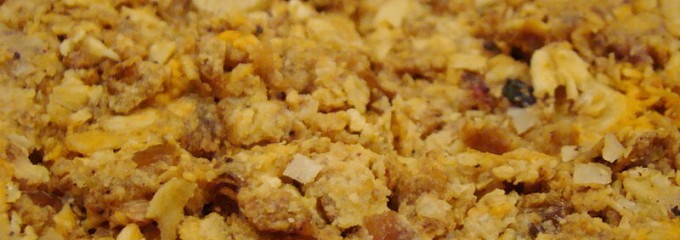5 food swaps to a healthier diet

When you decide to start eating healthier, totally revamping your entire diet might not be the best way to begin. Drastic, sudden changes to the way you cook and eat could be too overwhelming and cause you to give up within a few days. Instead, it’s better to ease into healthier habits. Maybe you can start eating a more nutritious breakfast, or making over an unhealthy snack so that it offers more in the way of vitamins and minerals. Here are five easy food swaps that will make your diet healthier without too much effort:
- Olive or canola oil for butter. If you’re the type of person who sautes everything in butter or always has a few sticks on-hand for baking, it’s time to rework the way you think about fat. Butter, which is laden with saturated fat, may be tasty, but it doesn’t offer much when it comes to nutrition. Canola and olive oil, on the other hand, are chock full of monounsaturated fats that can actually make your body healthier, and they still result in the same moist baked goods as butter. So the next time a recipe calls for a stick of butter, try swapping in some canola oil instead. Or just start cooking with olive oil when you make dinner.
- Fruit-loaded oatmeal for granola or cereal. There was a time when sugary granola was considered a health food, but we know better know. Regardless of whether or not it’s organic, whether or not it bears a trusted label, or whether or not you got it in the health food aisle, granola is essentially a treat. It always contains added sugar. So it’s totally fine to enjoy some for dessert, but it shouldn’t be your breakfast. Instead, whip up some plain oatmeal and load on the blueberries or sliced bananas for sweetness in the morning.
- Herbs and spices for salt. One of the easiest healthy-cooking mistakes to make is skipping heavy sauces, but making up for it with tons of salt. There are ways to achieve bold, complex flavors without racking up the sodium: using dried herbs and spices. Opt to make your own seasoning blends at home, since store-bought versions are usually pretty heavy on the salt, and try Indian or other international dishes to gain exposure to spices you may not know about. Perhaps your taste buds haven’t even discovered their favorite herb yet.
- Spinach for iceberg lettuce. If you currently count iceberg lettuce toward your daily intake of vegetables, we have some bad news: it bears hardly any nutrients. Iceberg is mostly water. Its nutrition profile looks even sadder when compared to that of spinach, a leafy green that’s rich in vitamins A and C, and even contains some calcium and iron. Try swapping your typical iceberg salad for a spinach salad to beef up on these nutrients.
- Baked chicken for fried chicken. Yes, fried chicken is undeniably delicious. And indulging in a piece here or there isn’t going to hurt you, but it should be an occasional treat, not a daily indulgence. A version that you can eat more regularly is baked chicken breaded with almond or chickpea flour. This preparation drastically cuts down on calories, and also sidesteps the potentially carcinogenic compounds associated with deep-frying at high temperatures.
20 easy food swaps to help you eat healthier [CNN]
25 Food Swaps That Slash Calories [Health]
5 Small Food Swaps to Make You Instantly Healthier [EatingWell]